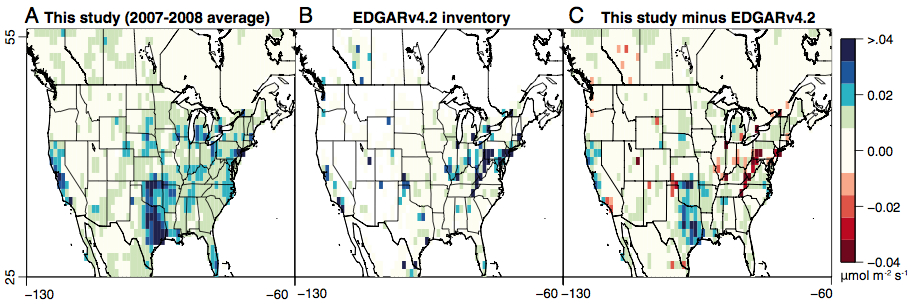US Methane Levels Higher Than Thought

Thanks in large part to gas wells and cow farms, the United States is spewing 50 percent more methane, a potent greenhouse gas, than previous estimates have measured, according to a new study.
For the study, published Monday (Nov. 25) in the journal Proceedings of the National Academy of Sciences, researchers from universities and government labs fanned out across the United States in 2007 and 2008 and measured levels of methane gas in the air. Though methane breaks down in the atmosphere after only 10 years, faster than carbon dioxide, it's about 30 times more effective than carbon dioxide at trapping heat escaping the Earth — the greenhouse effect that leads to global warming.
Total methane emissions in the United States were 1.5 to 1.7 times higher than amounts previously estimated by the Environmental Protection Agency and by the International Emissions Database for Global Atmospheric Research (EDGAR), respectively, the study found.
The difference between the estimates comes from ways the various groups calculate methane emissions, the researchers said in a statement. The U.S. EPA and EDGAR count total emissions from the source, such as each cow and each unit of coal and natural gas sold in the country. The new study tracked actual methane emissions in the air, the scientists said.
"The bottom-up and top-down approaches give us very different answers about the level of methane gas emissions," lead study author Scot Miller, a graduate student at Harvard, said in the statement. "Most strikingly, our results are higher by a factor of 2.7 over the south-central United States, which we know is a key region for fossil-fuel extraction and refining. It will be important to resolve that discrepancy in order to fully understand the impact of these industries on methane emissions."
Man-made sources contributed about 60 percent of the methane, and 40 percent of the gas was from natural sources such as wetlands, the study concluded. Nearly 25 percent of the total man-made methane emissions were from Texas, Oklahoma and Kansas. [Greenhouse Gases: The Biggest Emitters (Infographic)]
In California, a related study led by Lawrence Berkeley National Laboratory found the state's total methane emissions are 1.3 to 1.8 times higher than the California Air Resources Board estimate. Those findings were published Oct. 3 in the Journal of Geophysical Research.
Get the world’s most fascinating discoveries delivered straight to your inbox.
The air samples were collected by aircraft and from instruments stationed on telecommunications towers. The research team is now tracking present-day methane levels to measure changes related to the boom in U.S. oil and gas production.
Email Becky Oskin or follow her @beckyoskin. Follow us @livescience, Facebook & Google+. Original article on LiveScience.

